#Guelphs and Ghibellines
Text
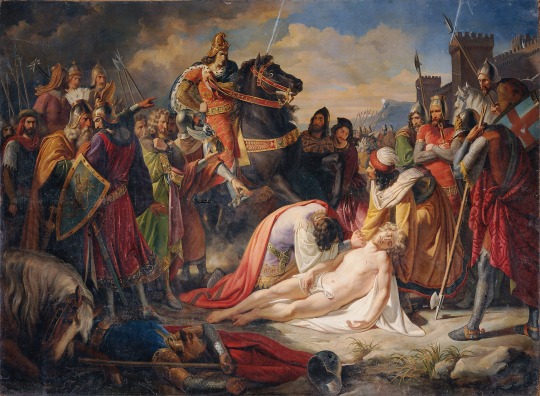
Charles I of Anjou over the body of Manfred after the Battle of Benevento on 26 February, 1266
by Carl Rahl
#battle of benevento#art#carl rahl#manfred#charles of anjou#medieval#middle ages#guelphs#ghibellines#italy#southern italy#history#knights#knight#kings#king#europe#european#hohenstaufen#benevento#kingdom of sicily#sicily#manfred of sicily#capetian#anjou#charles i#holy roman empire
55 notes
·
View notes
Text
Guelph chat
Podestà_of_Bologna: Hate the Holy Roman Emperor so much
👍15 🔥12
Lombard_1196: Just swore allegiance to his holiness the Pope
🔥14 🇻🇦10
Ghibelline.74: I think the Holy Roman Emperor should be subordinate to the pope
👎20
Hohenstaufen_hater: @mods ?
1 note
·
View note
Photo

A great way to remind your children to oppose the encroachment of the Holy Roman Empire this holiday season!
1 note
·
View note
Text
Looks like guelphs versus ghibellines is back on the menu boys
46 notes
·
View notes
Text
A Guildsman Goes Forth to War, World-Building Part II
Historical Departures:
As you might imagine, in a world that's experienced quite a significant change almost a thousand years previously, Europe circa 1500 AD in A Guildsman Goes Forth to War is not the same as the one from our timeline. Names and places are familiar but distinct, and the borders of entire countries have shifted because a battle that went one way in one timeline went the other in this.
For the purposes of this novel, I wish to draw your attention to two more significant historical departures that will be the most central to the main characters and the plot.

The first departure has to do with the outcome of the Franco-Flemish War at the beginning of the 14th century. As in our timeline, the war began as a conflict between Phillip the Fair (although in this world, he was King of Gallia, rather than of France) and the Count of Flanders, and turned into a Flemish revolt against the overlordship of France that enraged and terrified the French chivalry after the Guldensporenslag. Unlike our timeline, however, the Count of Flanders offered marriage of his younger daughter to Rudolf I of the Empire after Phillip blocked his marriage alliance to Edward of Anglia.
While sadly in this timeline the Flemish cause did not ultimately win victory either, the Imperial marriage meant that when French forces pushed the Flemings' backs to the wall at Zierikzee and Mons-en-Pévèle, they were met by an Imperial expeditionary force. Rudolf I was no partisan of the burghers, but neither was he about to have Phillip the Fair as a neighbor. And so instead, the Low Countries became a buffer zone between the Kingdom of Gallia and the Sacrum Imperium.
Major warfare between Gallia and the Empire was avoided. (After all, Phillip had his hands full with Edward and Rudolf desperately needed that bastard Pope to agree to his coronation.) As for the people who had fought so hard for their freedom, the militias were disbanded, the burghers were stripped of much of their former independence, all commoners were forbidden to carry arms, and the local nobility were carefully balanced between Gallician and Imperial lines to keep the peace. Everyone returned to the business of spinning thread into gold. But still the memory of the goedendag lingered...

The second, more recent event is the rise of the Lega di Mille Communi. At the height of the Wars of the Guelphs and Ghibellines, a number of Italian communes hatched a conspiracy "as to dwarf any previous such venture in the history of man." To end the constant fighting and free themselves from the ambitions of Pope and Emperor both, these communes pretended loyalty to both factions, offering loans and fighting men while working within the walls of their own cities to plant spies, provacateurs, and assassins among the leading families of the signorile.
This silent campaign built to its height at the Second Battle of Legnano, where the combined forces of Pope Boniface VIII and his Guelph allies and Emperor Louis IV and his Ghibellines met again at that place honored in song and memory as the place where Barbarossa was humbled. When the battle was fully joined, a pre-arranged signal was given and the condottieri on both sides turned on their own armies, making a daring charge for the command tents of Pope and Emperor alike. In the confusion and chaos, those great and noble persons were taken captive in the name of the newly revealed Lega di Mille Communi.
The shockwave echoed across all Europe. For six months, the greatest secular and religious authorities in Christendom lingered in golden fetters, while Kings and Cardinals from ultramontano threatened foreign intervention. Across northern and central Italy, a civil war raged in the streets and in the fields, but the Guelph and Ghibelline partisans found themselves leaderless and undirected, unwilling to combine with their hated enemies against the professional forces of the well-heeled Lega who toppled government after government from within and without. When the dust had settled, a "Treaty of Perpetual Liberty" was signed by the Empire and the Papal See alike. Under the terms of this pact, the Lega was recognized as independent of both, the sole legitimate sovereign of all territories south of the Alps.
Naturally, this document signed under heavy coercion was immediately repudiated the moment the principals were freed (albeit under heavy bond). Louis IV declared war the moment he set foot on German soil, and Boniface would have done the same in his own territories had he not dropped dead of a rage-induced stroke. For another ten years, the Lega fought to uphold the Treaty, and ultimately narrowly triumphed thanks to a crucial alliance with the Swiss Confederacy that bled the Emperor's legions white as they tried to fight their way south through the Alps, and thanks to a deadlocked Papal conclave (kept that way by heavy bribery and constant espionage) that allowed the Lega to fight on one front at a time.
But in the end, the Lega endured because of the simple principles of its constitution. Under the articles of federation and defensive alliance, each commune was largely free to govern itself within certain boundaries. No separate alliance or agreement with any foreign state was allowed. Limited wars between Communi were allowed after arbitration, but not to the point of outright conquest of one city-state over another. Contracts would be honored across the Lega, and exchange rates between local currencies would be fixed at yearly conferences. Violators would face the combined forces of every other Communi bound together in fraternal oath.
One Pope after the other was crippled with debt until they had to sell the Donation of Pepin city by city and valley by valley, culminating in a truly Croesian subvention from the Lega for the new Prince of the Vatican. The Kingdom of Naples tried again and again to fight its way up the boot, only to find itself mired in costly sieges ahead and suspiciously well-funded peasant rebellions behind, until eventually the House of Anjou declined into civil war. The Lega was not a peaceful country after independence, but the fighting kept their condottieri well-trained and well-paid, and a new cultural ethos emerged among the Communi that they would uphold as jealously as the virginity of their kinswomen: "I against my brother, my brother and I against my cousin, my cousins and I against a foreigner."
And so for the first time since the time of the Divine Julius, one of the major powers of Europe was a Republic(s). A specter had begun to haunt the crowned heads of Christendom...
19 notes
·
View notes
Text
the fact there is a university of guelph is so funny to me.. is there a university of ghibelline too.
6 notes
·
View notes
Text
due to my love of all things Cavalcanti and Ficino related, I went on a search for Cavalcanti's home. And la, I found at least what currently exists as the former Cavalcanti estate.
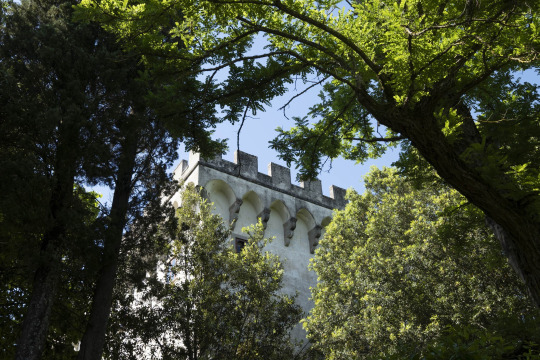
[...] as far back as the Middle Ages the Cavalcanti, a powerful Florentine Guelph family, owned numerous holdings in the locality of Murlo between the Pesa river and its tributary, the Virginio. The old feudal property was destroyed by the Ghibellines after their victory over the Guelphs at the Battle of Montaperti.
What remained of the estate was divided up between various members of the Cavalcanti family, and Lorenzo Cavalcanti undertook the task of reconstruction and improvement, as well as buying back neighbouring land, as recorded in a survey from 1498.
I presume this is the same Lorenzo Cavalcanti who was near Lorenzo de' Medici during the Pazzi Conspiracy and helped to save him from the would-be assassins.


The present structure, commissioned in the early 18th century by the Baldocci family, and was designed by the architect Bernardino Ciurini. Between 1723 and 1740 teams of artists decorated the structure, including the stucco artist, Giovan Martino Portogalli. Also employed were the Bolognese painters Anton Domenico and Giovan Filippo Giarré who executed the frescoed classical landscapes, vedute, in the salons on the ground and first floors. At the south west end, those parts of the villa dating from the 16th century were enlarged, incorporating the old 15th-century workers' house.

The above is an aerial shot of the current villa. Now this isn't what Giovanni would have lived in, but it's a good view of the lands that belonged to the family. No wonder Ficino wrote to Giovanni one time saying something like "I understand why you've not returned to me Florence because where you are is so beautiful."
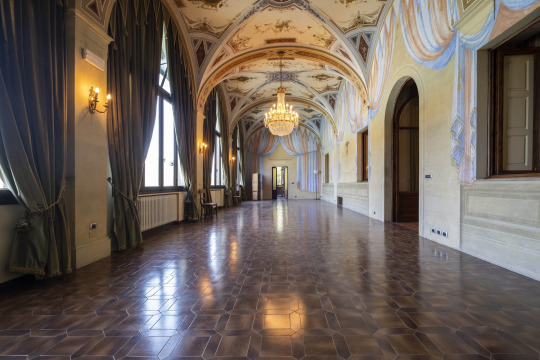

Yeah, I think I could live here happily enough.
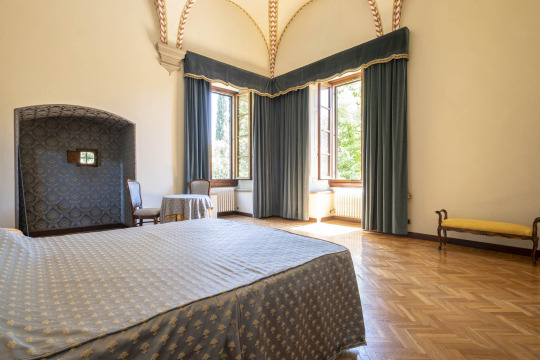
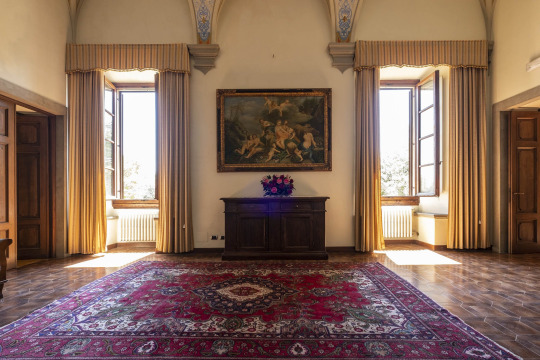
I can see why Ficino was so happy to stay with Cavalcanti for extended durations of time. I'd happily write philosophy if I had some of the views presented from this vantage point.
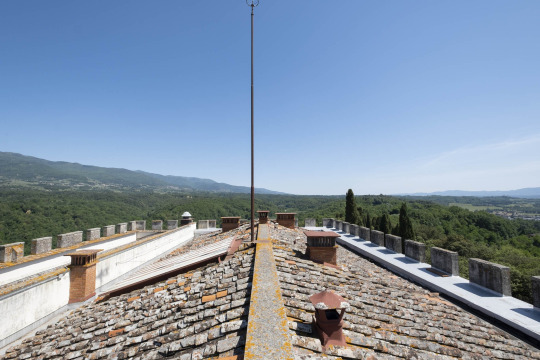

Now, I'm not sure if Giovanni had access to this specific land and whatever house/palazzo was on it during his lifetime given that the land had been divvied up between family members. But they all were in roughly the same area, so it gives a good idea of what he and Ficino would have been looking at while writing their Very Married We Have A Shared Email Account joint letters to people.
7 notes
·
View notes
Text

𝓓𝓲 𝓬𝓱𝓲 𝓽𝓲 𝓪𝓭𝓲𝓻𝓲, 𝓪 𝓬𝓱𝓲 𝓲𝓷𝓿𝓲𝓭𝓲𝓪 𝓱𝓪𝓲, 𝓷𝓪𝓽𝓾𝓻𝓪?
𝓐𝓵 𝓥𝓲𝓷𝓬𝓲 𝓬𝓱𝓮 𝓱𝓪 𝓻𝓲𝓽𝓻𝓪𝓽𝓽𝓸 𝓾𝓷𝓪 𝓽𝓾𝓪 𝓼𝓽𝓮𝓵𝓵𝓪,
𝓒𝓮𝓬𝓲𝓵𝓲𝓪 𝓼ì 𝓫𝓮𝓵𝓵𝓲𝓼𝓼𝓲𝓶𝓪 𝓱𝓸𝓰𝓰𝓲 𝓮 𝓺𝓾𝓮𝓵𝓵𝓪
𝓒𝓱𝓮 𝓪’ 𝓼𝓾𝓸𝓲 𝓫𝓮𝓰𝓵𝓲 𝓸𝓬𝓱𝓲 𝓮𝓵 𝓼𝓸𝓵 𝓹𝓪𝓻𝓪 𝓸𝓶𝓫𝓻𝓪 𝓸𝓼𝓬𝓾𝓻𝓪.
"Cecilia Gallerani was born in Milan in 1473, the daughter of Fazio, a doctor of law, descendant of a family of Sienese origin who had emigrated to Milan for political reasons at the time of the feud between the Guelphs and Ghibellines. After their initial fortunes Fazio came to be referendary to the now widowed duchess Bianca Maria the Gallerani family went through a period of economic difficulties. Therefore Cecilia, unable to afford expensive teachers, was educated by her mother, the highly cultured Margherita de' Busti, who managed to provide her with so much knowledge and inculcate so many interests that she became one of the most cultured, brilliant and refined women.
The beautiful Cecilia, dressed in blue and purple, a long necklace of black pearls around her neck, looked to her left with a sweet and severe expression at the same time, with just the slightest hint of a smile. His hair was styled according to a style that Leonardo himself - a multiform genius, capable of inventing innovations even in the field of cosmetics - had invented: a long plait, embellished with a thin black ribbon wrapped around his forehead, known as a 'coazzone'. The Moor could not take his eyes off what Cecilia had in her arms: an ermine. An ermine that looked in the same direction as its 'mistress', to whom it even vaguely resembled, and which she held with her right hand softly hooked, as if to grasp it."
#perioddramaedit#donne italiane#cecilia gallerani#ludovico il moro#ludovico sforza#donne nella istoria#cortegiania#history#rinascimento#renaissance women#renaissance italy#milan#house sforza#ludovico maria sforza#italian history#itaniansedit#donneitaliane#selma ergeç#period drama#leonardo da vinci#perioddramasource#perioddramacentral#the lady with the ermine#15th century#women in history#women of history#lady with an ermine
23 notes
·
View notes
Text
i think that the idea that all angels are overly obedient little unquestioning soldiers comes from the visuals we get of the people they tend to possess. in a way, angels seem to have a type, lol.
it's interesting to see it the opposite way.
even if there are quite a lot of exceptions, the people who seem to be more easily manipulated by angels are the nuclear family-office-employee types. people who need to wear suits to go to work. people who are used to corporate-style management. people who are used to the idea of having a boss. people who SEEK power (the vessels of Castiel, Uriel, Zachariah, Bartholomew, Naomi, Rachel, Hester, the majority of the "grunt-like" angels seem to fall into this category)
but these are not necessarily angel-like traits. they are traits that angels need and use to con their way around consent. it's either that or the true-vessel thing was severely underthought. and i like to think it was not.
on the other hand, if angels are such a military-minded family how come we don't see one (1) soldier possessed by an angel with the notable exception of s13 where either all angels possess people in the military or just civilians wearing military gear (or a bit of both). i don't think it's explored how angels get their vessels in that season but it's sort of funny to visually see angels as soldiers after 9 seasons from their introduction.
let's compare it with s9: now, demons don't need consent but i still find it interesting that the writers went out of their way and showed us how demons usually possess not exactly random people (remember the grandma) but a VARIETY of people, while Abaddon make them change meatsuits. She wants war so she gets soldiers. The parallels between how Abaddon recruits her people and how the angel recruit theirs is quite fascinating but it was unfortunately stopped there.
Some angel-exceptions: notably, Gadreel and his bartender guy who told him yes twice; Malachi the anarchist and his thug-like gang; the church ladies and the bikers; the farmer-like guy and the grief counselor woman from s9e1. the angel who tortured Gadreel and Abner whose "angel turned rockstar" storyline was robbed by Lucifer. Lucifer himself has a different taste than most angels until he realizes or maybe remembers how good it feels to be worshipped and he goes bigger and bigger until he cons the president of the united states who could've been a real buddy boylisit. Balthazar, Gabriel and Raphael's vessels are a bit more of a mystery. I'd like to know more about Metatron's, lol.
In S12 Ishim's garrison's vessels seem to share the same style of clothes as opposed to Akobel. I can't say anything about XIX century fashion but Ishim&co's vessels seemed to be doing well financially and maybe belonged to the same class or group.
I don't know where I'm going with this, lol, but there's such a similar yet different resemblance with Leviathan Dick Roman in that Leviathans ARE the real apex of the supernatural food-chain and, once the narrative had decided to forget about them, angels sort of incorporated their traits but with a huuuuge difference: net of the resemblance of their vessels/victims, Leviathans seem to be more "upper middle class gone big during the opulent, cocaine-fueled 80s in American Dream America" while angels are more like "Italian Guelphs and Ghibellines families fighting over secular vs temporal power during the Middle Ages".
Angels are not just soldiers, nor C-level management: they're the power that comes from blood, the aristocratic kind, the kind that takes what it wants because it never really knew opposition nor has ever cared about it. these are NOT people who seek power, these are people born IN it. well, not people. Angels. Anyway. THIS, this is showed a lot in how all angels act, regardless of their vessels.
#spn angels#supernatural#spn meta#or really just random thoughts#but it do think i have a point#even though i can't write it in a more logical fashion#or maybe i just don't#i don't know#spn s9#Leviathans
5 notes
·
View notes
Text
I made a longwinded rant on another creators post about ‘what will Christians do when they have no one to persecute ?’ It should be right after this posting on my site.
But, damn, I forgot some additional historical Christian v Christian sectarian violence
Such as…
When the papacy joined with the French speaking Viking Catholics (see next blog) Rome took the opportunity to sever ties in 1054 with the eastern branch of Catholicism & the eastern Roman Emperor both based in Constantinople.
At the same time the papacy decided it was no longer under the authority the western Roman Emperor who was based in Frankfurt.
Of course Catholic Europe then had two centuries of warfare to determine the answer to the burning question whether the Roman Emperor appointed the head of the Church or whether the Pope was elected by the Cardinals.
Plus
In addition to the Protestant Separatist Churches vs Catholic loyalist Church during the Reformation, the English Crown resumed the Part 1 G vs G issue by making the Crown the head of the Church and appointed of Archbishops.
And I forgot
If one is Evangelical or Catholic in the USA one understands that Evangelicals don’t consider Catholics to be Christians.
MTG has already fired the opening shot in that coming conflict:
Despite their disdain of Satanic Catholicism, the Evangelical Protestant sects base their vernacular language Bibles on the obviously bad translation including obviously deliberate changes that is the Catholic’s Latin Vulgate translation. Instead of basing vernacular bibles directly on the older Greek language Scriptures used by the Eastetn Orthodox Christian Churches.
But that would lead to yet another war.
Here’s one obvious change you can research when you are bored. Google ‘Mathew 25 46 Greek Koine to English’. Then compare that translation into English with any English language Catholic or Protestant Bible.
‘Eternal Damnation’ or an ‘Age of Correction’
Then see if you can find ANY Old Testament prophet or New Testament apostle who ever discusses ‘Eternal Damnation’
Can’t criticize. The Supreme Being didn’t mention Eternal Damnation either when expelling Adam & Eve, when drowning the world, when presenting the 10 Commandments.
Nor did any Church Father of the 2nd, 3rd, and 4th Centuries. Not intill Jerome’s Latin paraphrasing version.
Christian’s have aditopnal myriad of beliefs which are without Scriptural basis. But has NEVER stopped Christian’s persecuting each other or anyone they felt weren’t touting and acting out the official dogmatic Belief doctrines
Today their 150+ Christian denominations in the US. Each with its own dogmatic Belief doctrines.
5 notes
·
View notes
Note
What does Guelphs va ghibbelines mean?
The Guelphs and Ghibellines were rival political factions in late medieval Italy, supporting the Pope and the Holy Roman Emperor respectively. Their conflict ended with the decline of Imperial power in Italy and the major political changes wrought by the Italian Wars at from beginning of the 16th century.
16 notes
·
View notes
Text
That’s funny.
From Osprey’s Campaldino:
The battle began. From the Ghibelline leaders came the cry that resounded throughout the ranks of the soldiers, ‘San Donato cavaliere’ (Saint Donatus the knights, or we are the knights of Saint Donatus - Saint Donatus is the patron saint of Arezzo). The Guelphs responded with ‘Narbona cavalier’ (Narbonne the knight, or we are the knights of Narbonne [the commander of the Guelph army at Campaldino]). It was a mocking retort to the Ghibellines’ invocation to a hallowed being; the Guelphs were saying they were led by someone actually on the battlefield that day.
3 notes
·
View notes
Text
tumblr poll that asks if u would rather have been a guelph or a ghibelline
1 note
·
View note
Text
Fought at the Guelph-Ghibelline conflict this past weekend!

Thanks so much to all the guys! Couldn't have done it without you
2 notes
·
View notes
Text
Events 9.4 (before 1930)
476 – Romulus Augustulus is deposed when Odoacer proclaims himself "King of Italy", thus ending the Western Roman Empire.
626 – Li Shimin, posthumously known as Emperor Taizong of Tang, assumes the throne over the Tang dynasty of China.
929 – Battle of Lenzen: Slavic forces (the Redarii and the Obotrites) are defeated by a Saxon army near the fortified stronghold of Lenzen in Brandenburg.
1260 – The Sienese Ghibellines, supported by the forces of Manfred, King of Sicily, defeat the Florentine Guelphs at Montaperti.
1282 – Peter III of Aragon becomes the King of Sicily.
1479 – The Treaty of Alcáçovas is signed by the Catholic Monarchs of Castile and Aragon on one side and Afonso V and his son, Prince John of Portugal.
1607 – The Flight of the Earls takes place in Ireland.
1666 – In London, England, the most destructive damage from the Great Fire occurs.
1774 – New Caledonia is first sighted by Europeans, during the second voyage of Captain James Cook.
1781 – Los Angeles is founded as El Pueblo de Nuestra Señora La Reina de los Ángeles (The Village of Our Lady, the Queen of the Angels) by 44 Spanish settlers.
1797 – Coup of 18 Fructidor in France.
1800 – The French garrison in Valletta surrenders to British troops who had been called at the invitation of the Maltese. The islands of Malta and Gozo become the Malta Protectorate.
1812 – War of 1812: The Siege of Fort Harrison begins when the fort is set on fire.
1827 – The Great Fire of Turku almost completely destroys Finland's former capital city.
1839 – Battle of Kowloon: British vessels open fire on Chinese war junks enforcing a food sales embargo on the British community in China in the first armed conflict of the First Opium War.
1862 – American Civil War Maryland Campaign: General Robert E. Lee takes the Army of Northern Virginia, and the war, into the North.
1870 – Emperor Napoleon III of France is deposed and the Third Republic is declared.
1882 – The Pearl Street Station in New York City becomes the first power plant to supply electricity to paying customers.
1886 – American Indian Wars: After almost 30 years of fighting, Apache leader Geronimo, with his remaining warriors, surrenders to General Nelson Miles in Arizona.
1888 – George Eastman registers the trademark Kodak and receives a patent for his camera that uses roll film.
1912 – Albanian rebels succeed in their revolt when the Ottoman Empire agrees to fulfill their demands
1919 – Mustafa Kemal Atatürk, who founded the Republic of Turkey, gathers a congress in Sivas to make decisions as to the future of Anatolia and Thrace.
1923 – Maiden flight of the first U.S. airship, the USS Shenandoah.
0 notes
Text
Since there's a town called Guelph in Ontario there should be a rival town in Quebec called Ghibellines.
0 notes